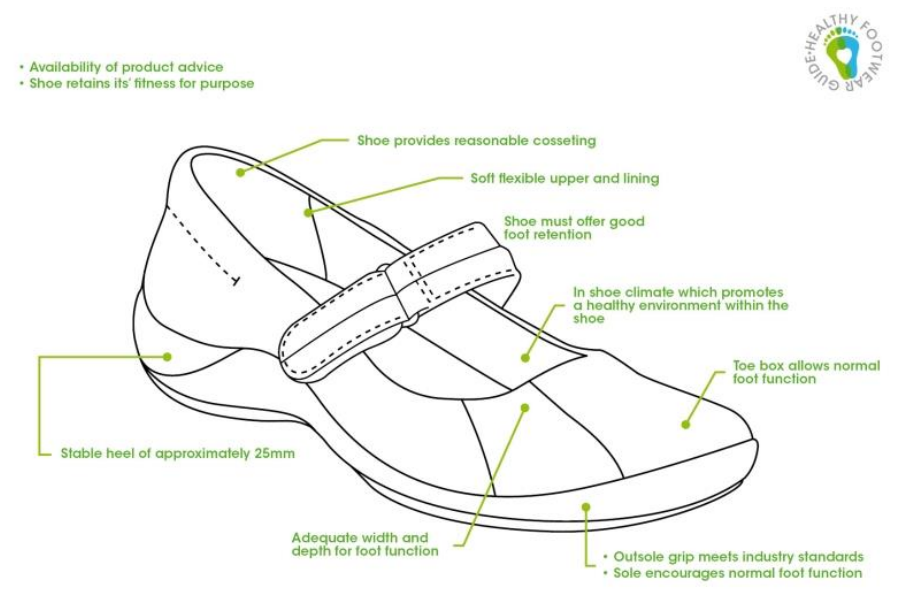General Shoe Advice
Reasons for good footwear
You will have been referred to the orthotic department because you have problems with your feet, ankles, knees, hips or lower back. Often these problems come from the way your feet align themselves. In order to help your condition, we recommend you wear appropriate footwear. Often we prescribe special insoles (orthoses) to go inside your footwear. This leaflet will help you choose footwear which will ensure that the orthotics work properly and gives general guidelines for healthy footwear, to help you buy what is best for your feet.
What we are looking for
The diagram below shows the key features we are looking for within a shoe:
- Wriggle room for your toes; when you put a shoe or trainer on make sure you have wriggle room for your toes. Check the tops of your toes are not in contact with the upper of the shoe
- Enough depth for your foot; the shoe should be deep enough to easily fasten the shoe. Your heel should not slip up and down too much at the back. The heel part of the shoe should include a stiffener and come up high around the heel. If you need to put an orthotic in your shoe a removable insole is best, as you can take it out and replace it with your orthotic
- Enough width for your foot; you should not feel any pressure across the width of the shoe, and you should not see the leather bulging to accommodate your foot width
- Enough length for your foot; there should be a gap of between 6-10mm from the end of your toes to the end of the shoe to stop toes from getting hurt
- A good sole unit; the sole unit should not be too flexible (not allowing the shoe to be bent or twisted excessively)
- Good quality upper; the upper and lining of the shoe should be soft and flexible so that the toes can bend without causing pain or pressure; a breathable material such as leather is best
- Sufficient heel height; the shoe should neither be too flat nor too high. A heel height of about 10-25mm is recommended
- Fastening; your shoe needs to have some type of fastening, either lace, Velcro or buckle is fine. The best type fasten high on the foot keeping the heel pushed back in the shoe.

About this leaflet
Author: Nicola Green, Orthotist
Written: June 2020
Updated and approved: November 2021
Review date: November 2024
Edition: v2
If you have feedback regarding the accuracy of the information contained in this leaflet, or if you would like a list of references used to develop this leaflet, please email patientinformation.leaflets@dchft.nhs.uk
Print leaflet